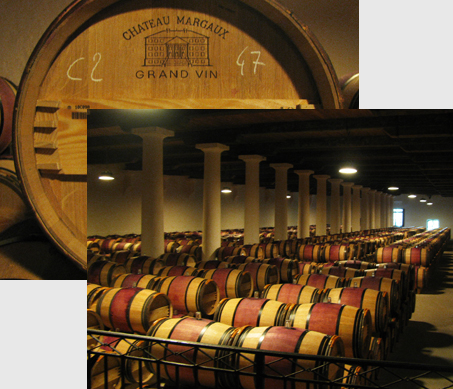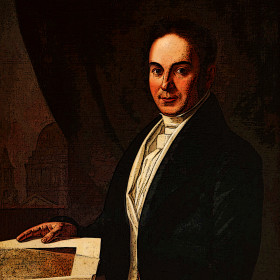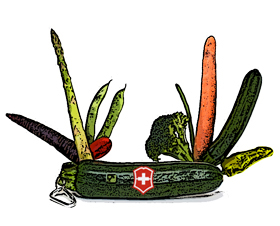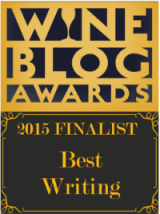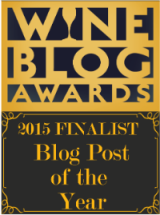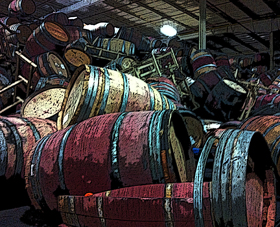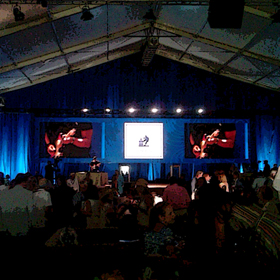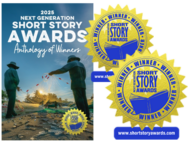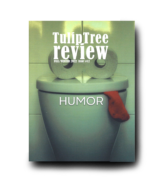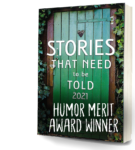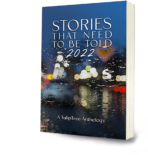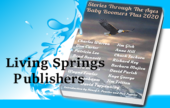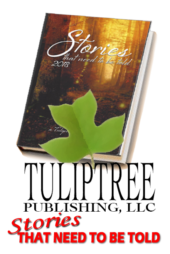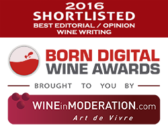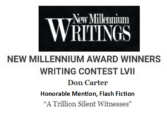Can’t See The Forest For The Lees – Of Oak, Wine & Bacon.
Chapter Thirteen, Part Two.
“Oak is here and it will be with us for at least the remainder of the current generation—a generation that has been carefully taught that if a little oak is a good thing, a lumber factory is wonderful.” Dan Berger
Wood barrels have been used by the wine trade for over two thousand years, but just over a century ago astute winemakers recognized the transformative effect that oak has on wine and they began to look at barrels as more than storage vessels. Over time, patient old-world vignerons learned that the species of oak, outdoor seasoning, the degree of toasting over fire and the time spent in barrel all bear heavily on how oak “flavors” wine. They learned that one type of oak may add spicy allspice and cinnamon nuances while another may add a smoky bacon flavor. I don’t know about you but I’d eat my left foot if it had a smoky bacon flavor.
Read MoreOak – The Grandfathered Ingredient.
Chapter Thirteen, Part One.
“Oak in wine should be like a ghost in a chateau; you sense its presence, but you don’t actually recognize it.” Pierre Seillan
Before his untimely death in 2002, I had lunch with Bruce Guimaraens, the fifth generation winemaker for the esteemed port houses Fonseca and Taylor-Fladgate. Guimaraens was the great, great grandson of Manoel Guimaraens, who founded Fonseca-Guimaraens in 1822. I probably think being a great, great grandson is a big deal because I was never a great, great grandson; I was just an average great grandson.
Read MoreThe Salt Conundrum In Food & Wine Pairing.
Chapter Nine, Part Eight.
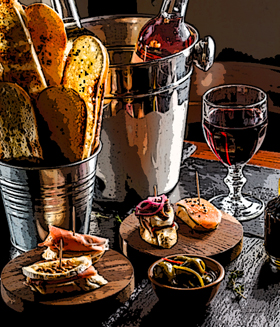 When pairing food with wine, sweet and sour tastes fall neatly into the cancellation category, bitter and piquant are subject to the cumulative effect, and umami is best grouped with neutral pairings, but what about salt? In moderation, salt doesn’t seem to have any conspicuous consequence, but how does excessive saltiness in food affect the taste of wine? To learn how (or if) salt fits into the A. cancellation, B. cumulative or C. neutral categories, I invited some friends over for some organoleptic research. They quickly declined until I told them that meant we were going to eat and drink wine.
When pairing food with wine, sweet and sour tastes fall neatly into the cancellation category, bitter and piquant are subject to the cumulative effect, and umami is best grouped with neutral pairings, but what about salt? In moderation, salt doesn’t seem to have any conspicuous consequence, but how does excessive saltiness in food affect the taste of wine? To learn how (or if) salt fits into the A. cancellation, B. cumulative or C. neutral categories, I invited some friends over for some organoleptic research. They quickly declined until I told them that meant we were going to eat and drink wine.
Good old fashioned research is difficult and time consuming but in the name of conscientious reporting the WASTED team (Wine Snark Academy for Sensory Testing, Evaluation & Debauchery) created a salty feast and drank five bottles of wine because that’s the kind sacrifice we’re willing to make in the name of, umm … science, yeah that’s it, science.
Read MoreThe Neutral Effect In Food and Wine Pairing.
The impact of the chemical reactions taking place in your mouth when you combine food and wine can be very obvious when you’re experiencing the cancellation effect or the cumulative effect, but there’s another interaction between food and wine that’s just as rewarding, but much less pronounced. I call this subtle interplay the neutral effect. I realize that describing a food and wine pairing as neutral sounds sort of, well … neutral, but that doesn’t mean these combinations are boring. Neutral pairings occur when similar flavors come together in a safe, reassuring place, sort of like Switzerland.
Read MoreThe 2015 Wine Blog Award Finalists Have Been Announced.
This morning the Wine Blog Awards announced the 2015 WBA finalists and WineSnark has been nominated for “Best Writing on a Wine Blog”. Shortly after this announcement it was reported that somewhere in Illinois a retired English teacher rolled over in her grave.
WineSnark is also a finalist for the “Best Blog Post of the Year”. For your convenience the nominated article has been reposted below. Who knows, maybe this will lead to a bona fide book deal. One publisher finally offered to publish WineSnark but they would only print one copy because I told them it’s a self-help book.
Le Chanceux’s Tale of Inspiration, Courage & a Little Luck.
Sue McNerney was hoping to turn her passion for wine into a profitable business when the Napa earthquake struck on the morning of August 24th. “I was standing in the kitchen when I saw the pictures on my I-pad and I walked over to the door and I said ‘Oh my God. It’s gone. It’s gone!’ ”
Read MoreNapa Auction Sets New Records For Single Lot, E-Auction, Barrel Tasting, & Blood Alcohol Level.
The Auction Napa Valley 2015 came to a close on Sunday night after raising $15.8 million for programs in children’s education and community health. While the total didn’t break the old record, new highs were set for a single Live Auction item, the E-Auction total, the Barrel Tasting total and how many gallons of Cabernet I can drink without falling down.
The Napa Valley Vintners reported, “Since its inception in 1981, the NVV has given more than $145 million in Auction Napa Valley proceeds to Napa County nonprofits.” The proceeds help more than 90,000 clients annually in Napa County, some of whom need the community health assistance after trying to lift all that money.
Read MoreThe Cumulative Effect In Food And Wine Pairing.
Chapter Nine, Part Six.
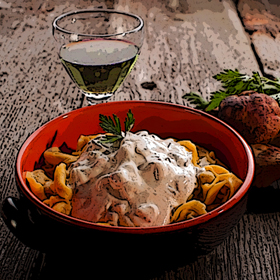 When pairing food with wine the cancellation effect works to your advantage once you understand how to balance the taste or texture of sweet and acidic food with similar traits in wine. While acidity and sweetness cancel each other out when combined on your palate, bitter and piquant sensations accumulate and magnify one another. The same can be said for pairing low acid foods with low acid wines so I’ll go ahead and say it; creamy or fatty traits do not cancel each other out; they accumulate on your palate (and also on your waistline). So after many years of deliberation I’ve decided to call this the cumulative effect.
When pairing food with wine the cancellation effect works to your advantage once you understand how to balance the taste or texture of sweet and acidic food with similar traits in wine. While acidity and sweetness cancel each other out when combined on your palate, bitter and piquant sensations accumulate and magnify one another. The same can be said for pairing low acid foods with low acid wines so I’ll go ahead and say it; creamy or fatty traits do not cancel each other out; they accumulate on your palate (and also on your waistline). So after many years of deliberation I’ve decided to call this the cumulative effect.
The Cancellation Effect In Food And Wine Pairing.
Chapter Nine, Part Five.
 Matching food and wine by weight will put you in the ballpark when choosing the proper wine, but taste is the key to hitting an astronomic-gastronomic home run. Sweet, sour, salt, bitter, umami and piquance interact with one another in predictable ways and once you understand how these principles apply at your dining room table you’ll be able to create some major league food and wine combinations. I lump these interactions into three categories I call the cancellation effect, the cumulative effect, and the neutral effect.
Matching food and wine by weight will put you in the ballpark when choosing the proper wine, but taste is the key to hitting an astronomic-gastronomic home run. Sweet, sour, salt, bitter, umami and piquance interact with one another in predictable ways and once you understand how these principles apply at your dining room table you’ll be able to create some major league food and wine combinations. I lump these interactions into three categories I call the cancellation effect, the cumulative effect, and the neutral effect.
The WineSnark Academy for Sensory Testing, Evaluation & Debauchery (W.A.S.T.E.D.) On Food & Wine Pairing Principles.
Chapter Nine, Parts Two & Three.
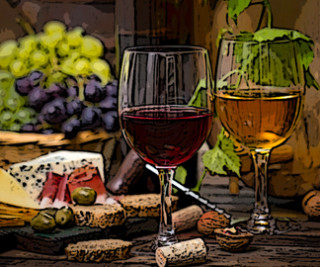 Shortly after WineSnark began its detailed research into taste perception it became apparent that an undertaking of this magnitude required a research team of dedicated, compassionate wine professionals, or as they’re known in the trade, drunks.
Shortly after WineSnark began its detailed research into taste perception it became apparent that an undertaking of this magnitude required a research team of dedicated, compassionate wine professionals, or as they’re known in the trade, drunks.
And so was born the WineSnark Academy for Sensory Testing, Evaluation and Debauchery (W.A.S.T.E.D.). We WASTED professionals do not take our research sitting down, as getting back up is often difficult, and because thousands of grapes have given their lives to further our understanding of human physiology, biochemistry, sensory perception and stuff.
Read More“Terroir Don’t Mean S_ _ _!”
Chapter Eleven. Part Five.
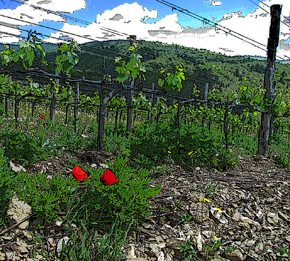 When it comes to the unique “sense of place” that makes wine regions unique, most wine professionals have a tendency to take terroir for granite. But there is one influential wine professional who claims terroir is nothing more than the emperor’s new clothes, a cunning contrivance to keep wine on a pedestal and inflate prices.
When it comes to the unique “sense of place” that makes wine regions unique, most wine professionals have a tendency to take terroir for granite. But there is one influential wine professional who claims terroir is nothing more than the emperor’s new clothes, a cunning contrivance to keep wine on a pedestal and inflate prices.
Fred Franzia, the man behind Bronco Wine Company, California’s fourth largest winery, is often at odds with those who preach the gospel of terroir, people I call terroirists. In 2010 Franzia wrote on his Facebook page,
Does anybody complicate Cheerios by saying the wheat¹ has to be grown on the side of a mountain and the terroir in North Dakota is better than Kansas and all this horse s- – -?²
Read More

